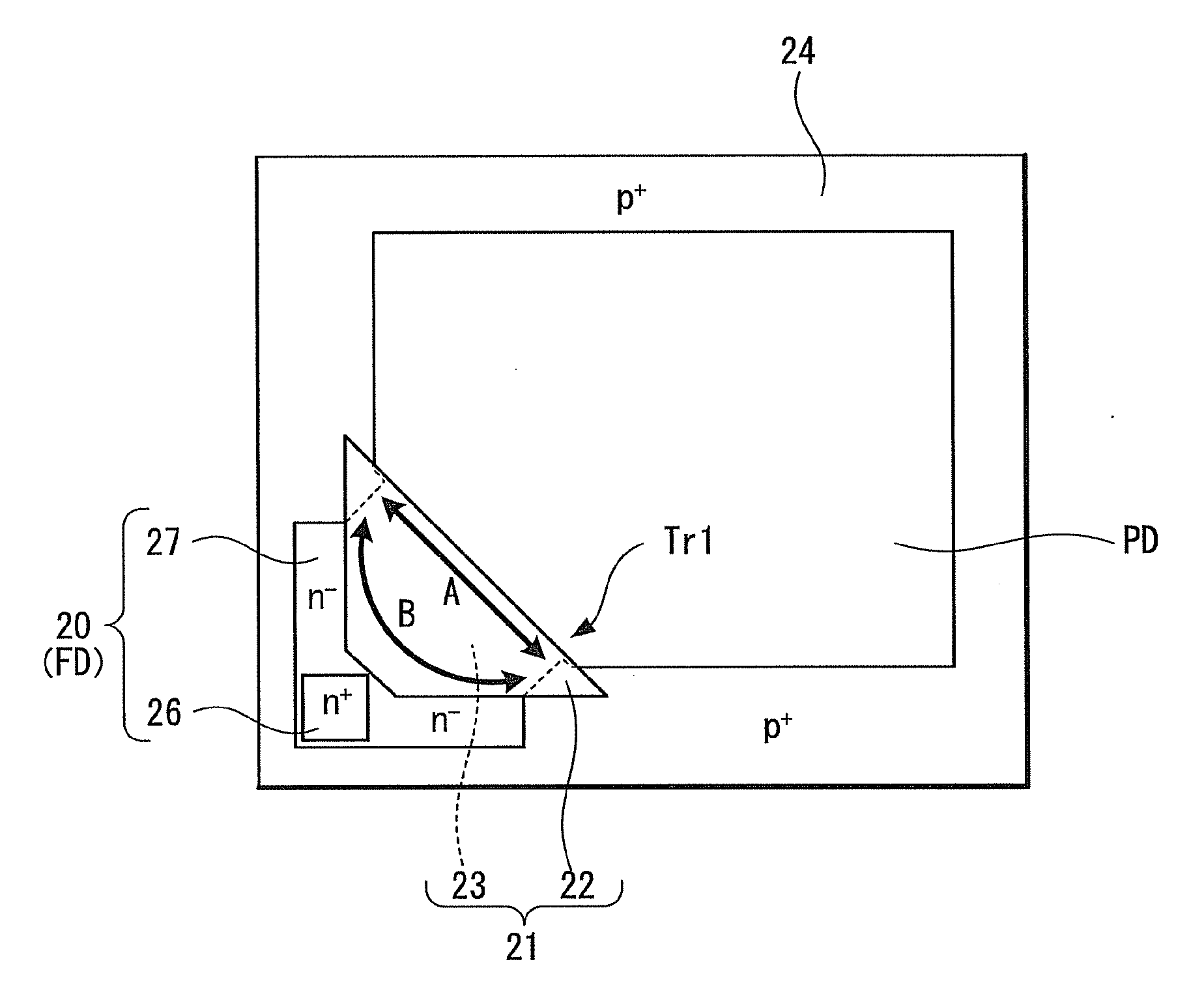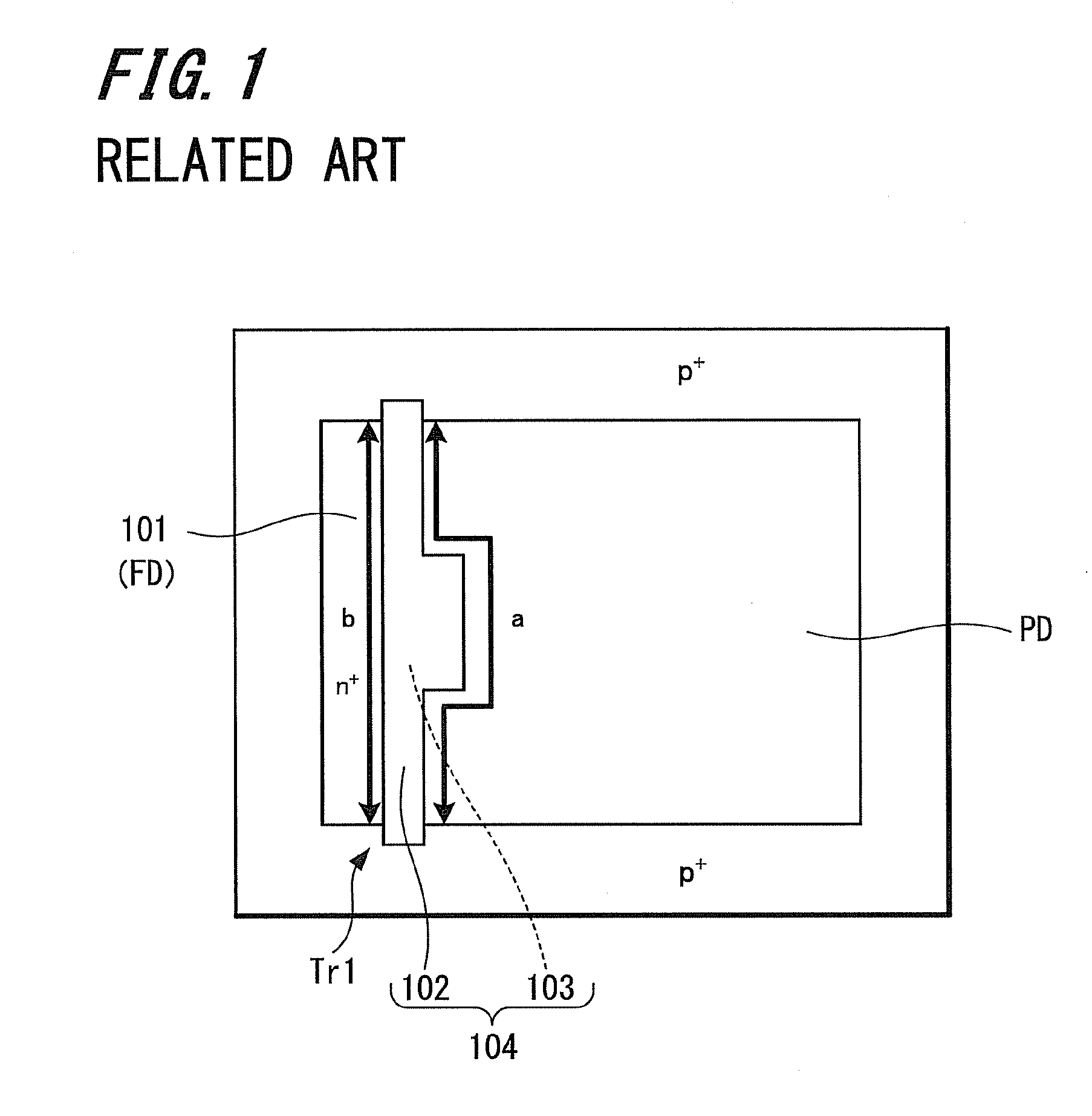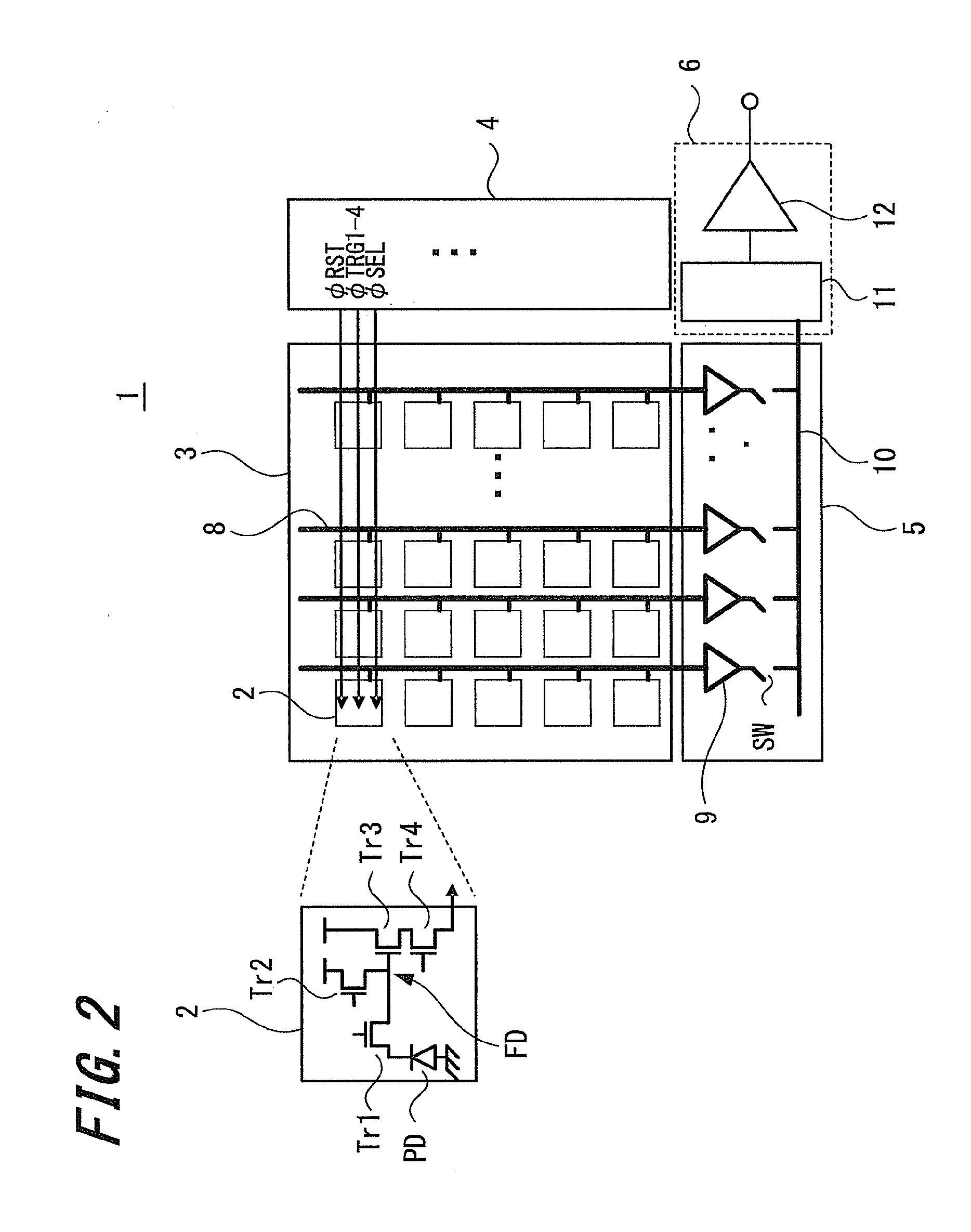Solid-state imaging device and camera
a solid-state imaging and camera technology, applied in the field of solid-state imaging devices and cameras, can solve the problems of reducing the gate size of the pixel transistor included in pixels, affecting the image quality of the image, so as to suppress the leak current from the photoelectric conversion element to the floating diffusion region, the effect of increasing the ease of generation
- Summary
- Abstract
- Description
- Claims
- Application Information
AI Technical Summary
Benefits of technology
Problems solved by technology
Method used
Image
Examples
Embodiment Construction
[0029]The present invention will be described hereinbelow on a variety of embodiments by referring to the accompanying drawings. It is not intended to be exhaustive or to limit the invention to those disclosed in the embodiments and illustrated in the drawings.
[0030]FIG. 2 is a schematic view illustrating a configuration of a solid-state imaging device or CMOS image sensor according to an embodiment of the present invention. Referring to FIG. 2, a solid-state imaging device 1 according to the present embodiment includes an imaging section 3 (i.e., pixel section) having a plurality of pixels 2 arranged in a two-dimensional array, and peripheral circuits arranged around the imaging section 3, having a vertical driving unit 4, a horizontal transfer unit 5, and an output unit 6. Each of the pixels 2 includes a photodiode PD serving as a photoelectric conversion element and several pixel transistors (MOS transistors) Tr.
[0031]The photodiode PD includes a region configured to accumulate s...
PUM
 Login to view more
Login to view more Abstract
Description
Claims
Application Information
 Login to view more
Login to view more - R&D Engineer
- R&D Manager
- IP Professional
- Industry Leading Data Capabilities
- Powerful AI technology
- Patent DNA Extraction
Browse by: Latest US Patents, China's latest patents, Technical Efficacy Thesaurus, Application Domain, Technology Topic.
© 2024 PatSnap. All rights reserved.Legal|Privacy policy|Modern Slavery Act Transparency Statement|Sitemap



